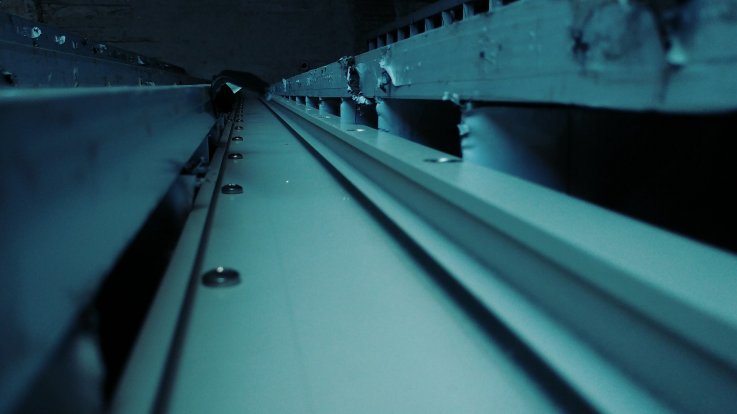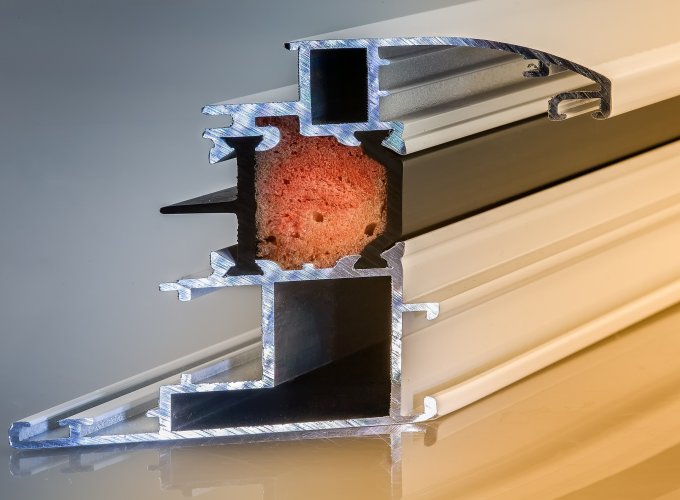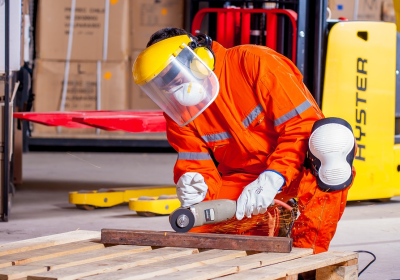What are aluminum profiles used for?

Aluminum profiles are an extremely versatile construction material that is used in many different fields. Their lightness, strength, corrosion resistance and ease of machining make them ideal for creating a variety of structures, from simple shelving to complex machinery.
Possible applications for aluminum profiles
Construction:
- Windows and doors: Aluminum profiles are ideal for building windows and doors because they are lightweight, strong and weather-resistant. They are an excellent alternative to traditional wooden and plastic windows. Their slender profiles allow for greater glazing, which provides more natural light indoors. In addition, aluminum is an environmentally friendly and easily recycled material.
- Facades: Aluminum profiles can be used to create building facades that are both aesthetically pleasing and functional. Aluminum offers a wide range of colors and finishes, allowing facades to match any architectural style. Aluminum profiles are also resistant to fire and corrosion, ensuring the longevity of the facade.
- Suspended ceilings: Aluminum profiles are often used for suspended ceilings because they are lightweight and easy to install. Suspended ceilings made of aluminum profiles can be used to hide electrical and plumbing installations, as well as to improve the acoustics of a room.
- Partition walls: Aluminum profiles can be used to build partition walls, which are lightweight and easy to dismantle. Aluminum profile partitions are ideal for offices, as they can be easily configured and dismantled as needed.
Industry:
- Machinery and equipment: Aluminum profiles are used to build machinery and equipment because they are lightweight, strong and easy to work with. Aluminum profiles are used to build machine frames, structural components, housings and other components. Their lightness ensures that machines are easy to assemble and transport, while their strength guarantees their longevity.
- Conveyors: Aluminum profiles are often used to build conveyors because they are lightweight and easy to install. Conveyors made from aluminum profiles are used in various industries such as logistics, manufacturing and agriculture.
- Support structures: Aluminum profiles can be used to build support structures such as warehouse racks. Storage racks made from aluminum profiles are lightweight, strong and easy to install. They can be customized to meet a variety of storage needs and requirements.
- Workstations: Aluminum profiles can be used to build workstations that are ergonomic and easy to customize. Workstations made from aluminum profiles are ideal for workshops, factories and other workplaces where worker safety and comfort are important.
Furniture:
- Furniture: Aluminum profiles can be used to build furniture such as chairs, tables and bookcases. Furniture made from aluminum profiles is lightweight, durable and easy to care for. They are an excellent alternative to traditional wood and metal furniture.
- Furniture fronts: Aluminum profiles can be used to create furniture fronts that are aesthetically pleasing and durable. Furniture fronts made from aluminum profiles can be lacquered, anodized or powder-coated, allowing them to match any interior style.
- Shelving systems: Aluminum profiles are often used to build shelving systems because they are lightweight and easy to assemble. Aluminum profile shelving systems are ideal for stores, offices and warehouses.
- Furniture accessories: Aluminum profiles can be used to create a variety of furniture accessories, such as handles and legs. Aluminum profile handles and legs are lightweight, durable and aesthetically pleasing.

Other uses for aluminum profiles
Aluminum profiles can also be used for construction:
- Canopies and structures: Aluminum profiles are ideal for building canopies, shelters and other outdoor structures. Their lightness and strength make them resistant to weather conditions, and their ease of installation allows for quick and hassle-free roofing of any space.
- Gates and fences: Aluminum profiles can be used to build gates and fences that are lightweight, durable and aesthetically pleasing. Gates and fences made of aluminum profiles can be powder-coated in any color, allowing them to match any style of property.
- Display systems: Aluminum profiles are often used to build exhibition systems because they are lightweight and easy to install. Display systems made of aluminum profiles are ideal for showcasing products at trade shows, exhibitions and other events.
- Decorative elements: Aluminum profiles can be used to create a variety of decorative elements, such as railings, handrails and skirting boards. Decorative elements made of aluminum profiles are lightweight, durable and aesthetically pleasing.
Find out more.
Advantages of using aluminum profiles
Aluminum profiles offer many advantages over other construction materials, including:
- Lightweight: Aluminum profiles are lightweight, which makes them easy to transport, assemble and disassemble.
- Durability: Aluminum profiles are strong and resistant to mechanical damage.
- Corrosion resistance: Aluminum profiles are resistant to corrosion, making them ideal for outdoor applications.
- Ease of machining: Aluminum profiles can be easily cut, stacked, welded and bent to create a variety of shapes and structures.
- Aesthetics: Aluminum profiles are available in a variety of colors and finishes to match any style.
- Eco-friendliness: Aluminum is an environmentally friendly and easily recycled material.
Summary
Aluminum profiles are a versatile and versatile construction material that is used in many different fields. Their lightness, strength, corrosion resistance and ease of machining make them ideal for creating a variety of structures, from simple shelving to complex machinery.
Aluminum profiles are increasingly used in construction, industry, furniture and other fields. Their advantages, such as lightness, strength, corrosion resistance and ease of machining, make them an ideal material for the future.



Komentarze (0)
Zostaw komentarz ⇾